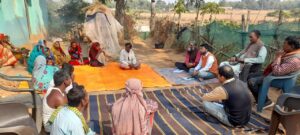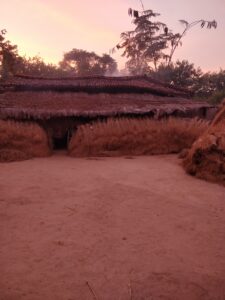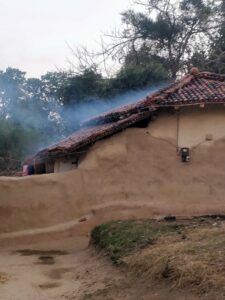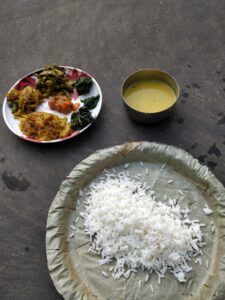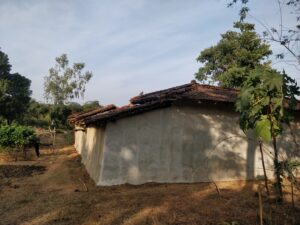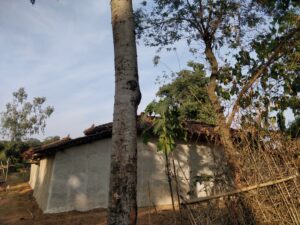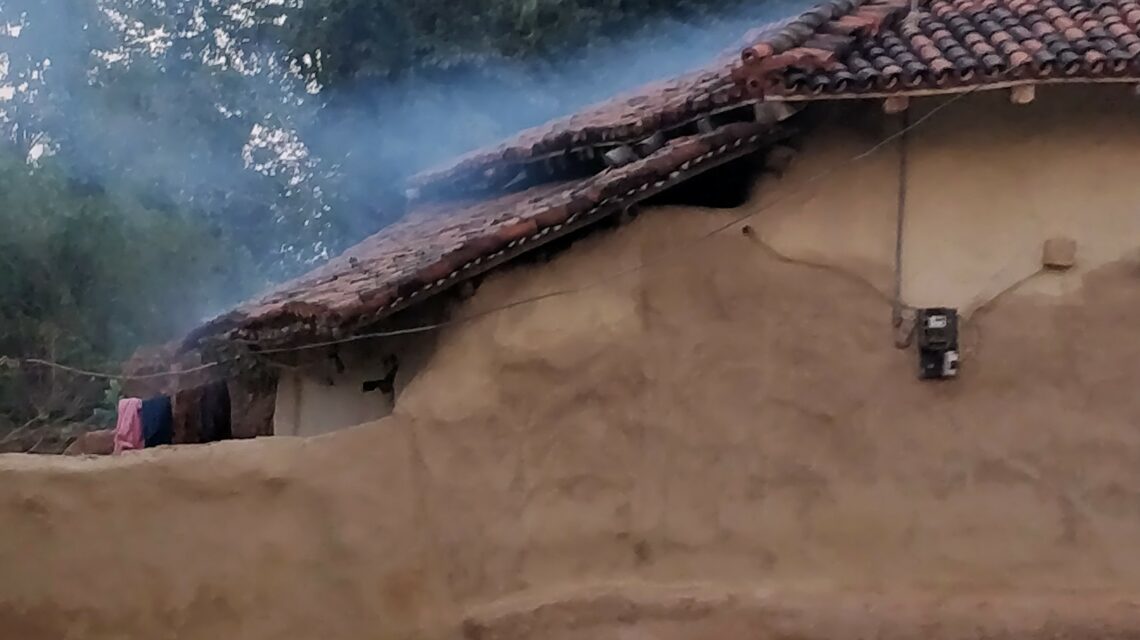All beings pervade the same elements of nature, the Panchtatvas. The same five elements pervade all beings and nature (air, water, earth, fire and space). The earthen homes in Raghunathpur, a village in Jharkhand state in India feel comfortable to the human mind, body and soul with their soft organic forms. Many architects and designers across time have been inspired by indigenous architecture because the organic forms give the feel of a dynamic impermanence and fit in beautifully to the landscape, whilst increasing our own sense of wellbeing through a womblike sense of protection and nourishment.
The materials are also healthy. The thick earthen walls, insulate as does the mud floor. The bamboo ceiling and roof is clad on top with earthen tiles; the building breaths in sync with the environment. There is not the vaguest threat from any point; no sharp or harsh edges in the interiors, no sense that the building has incurred any violence. We feel elevated and relaxed and in the lap of nature.
Our realisation as a society that we need to live sustainably also calls for equity and the wellbeing of all, aka Survey Bhavantu Sukhinah. For a long time in the history, this was the dominant paradigm across cultures. We see it from indigenous communities across the world; principles of equilibrium, reciprocity and solidarity in the community and nature pervade humankind’s universal consciousness.
Indigenous views of what community is, is also not just restricted to human beings. The circle of compassion and respect included all animate and inanimate parts of nature; in fact there was hardly anything that was classified as inanimate. A tree or mountain is seen as an ancestor.
These indigenous style homes also embody that deep caring for the whole of creation. When one cares for everything one sees, hears and feels, within ourselves and outside, we create a narrative of localisation. This is a key driver to attain sustainability, and it goes much deeper. By taking roots in the landscape, people feel a sense of stewardship for their extended homes and they have more self-motivation to take care of the world immediately around them. They don’t want to see trash on their doorstep, or forests being killed with monoculture of industrial agriculture.
The transformation in behaviour becomes visible in everyday life- including our architecture. It’s not a sacrifice to be sustainable anymore, it’s a way to rejoice life all around, to celebrate the wondrous nature of everyday life and every moment.
Imagine a future where we will live with this mind-set. We may not have to have specially designated days such as Earth Day, Water Day, Grandmothers Day, Farmers day etc. to remind ourselves of our connectivity to the earth and each other. We might remember that each day is an opportunity to feel part of, nurture and protect the whole.
